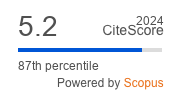Article | Open Access
Digital Policy as a Driver of Integration: Spillover Effects and European Commission Empowerment
| Views: | 1981 | | | Downloads: | 1972 |
Abstract: The Russian invasion of Ukraine and the global impact of the pandemic brought digital technology to the forefront of geopolitical strategy and geo-economic considerations, prompting European policymakers to embrace strategic autonomy and digital sovereignty. While existing scholarship has examined EU rhetorical and policy responses, its institutional dynamics have received less attention. This article addresses this gap by examining the growing political influence of the European Commission in terms of both its breadth (the range of issues it engages with) and depth (its decision-making authority). Using primary and secondary sources together with expert interviews, the study reveals that the EU responded to geopolitical threats in two key policy areas: digital service regulation (Digital Services Act and Digital Markets Act) and allocating digital-related financial resources in the context of the Recovery and Resilience Facility. Based on recent theoretical advances regarding EU geo-politicalisation and its geo-economic shift, the article argues that the increased power of the Commission is a result of neofunctional processes broadening its influence. However, this dynamic is more evident in the context of digital service regulation than in the context of financial resources. By analysing this transformation, the study offers a new perspective on the emergence of a more empowered and geopolitically assertive Commission in the era of transnational data governance.
Keywords: digital policy; internet; European integration; European Commission; neofunctionalism; platform regulation; recovery and resilience facility
Published:
© Sebastian Heidebrecht. This is an open access article distributed under the terms of the Creative Commons Attribution 4.0 license (http://creativecommons.org/licenses/by/4.0), which permits any use, distribution, and reproduction of the work without further permission provided the original author(s) and source are credited.


